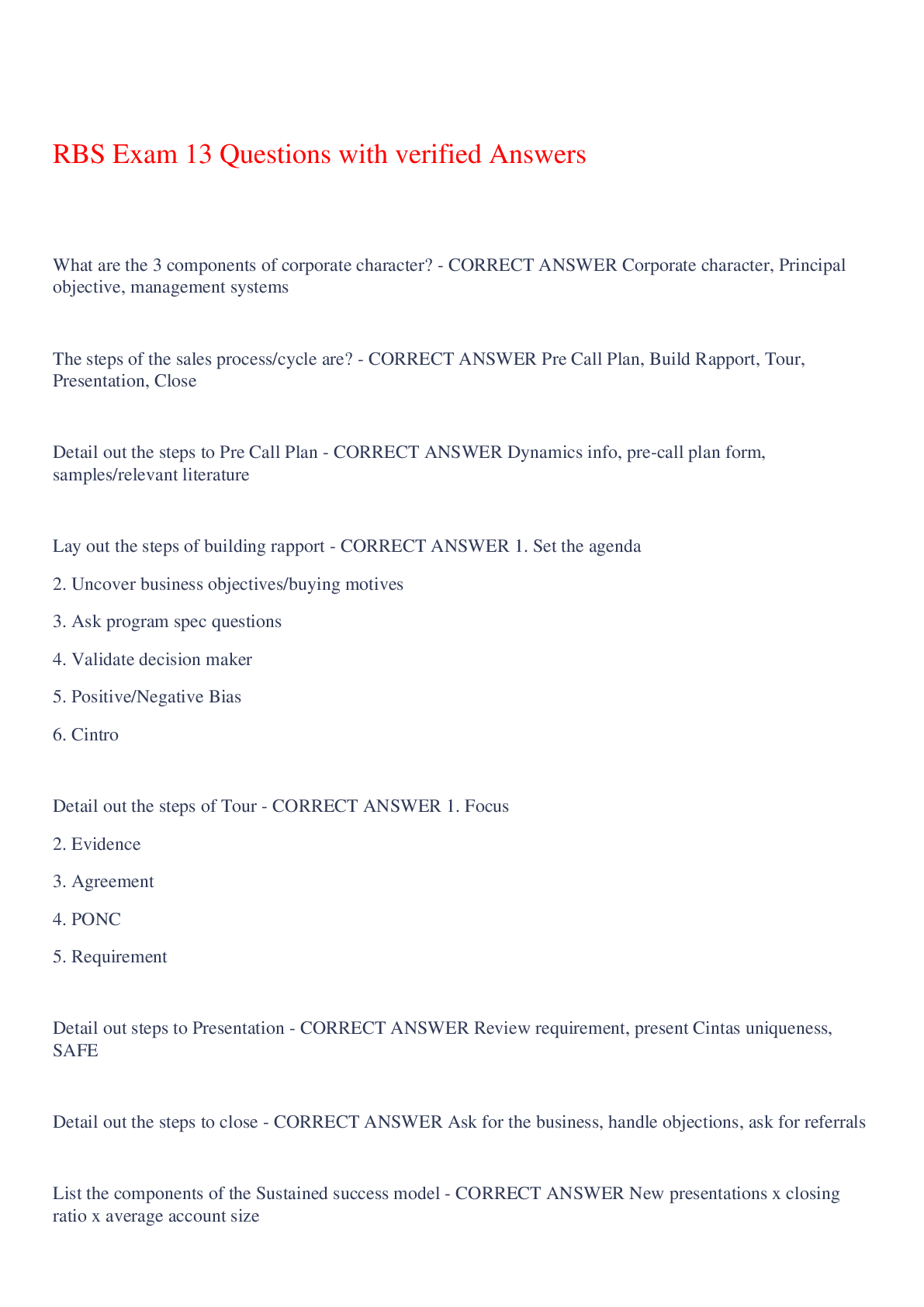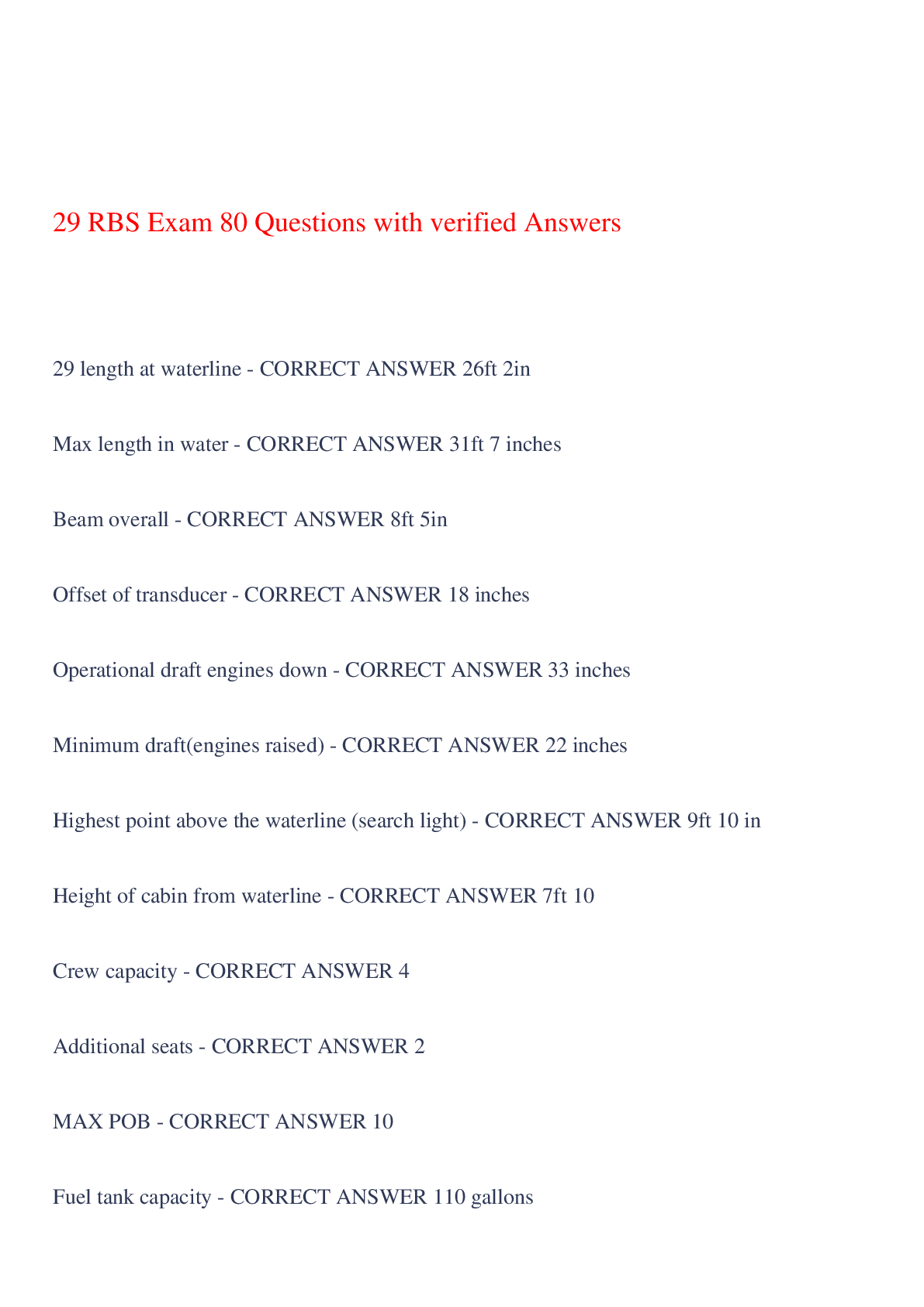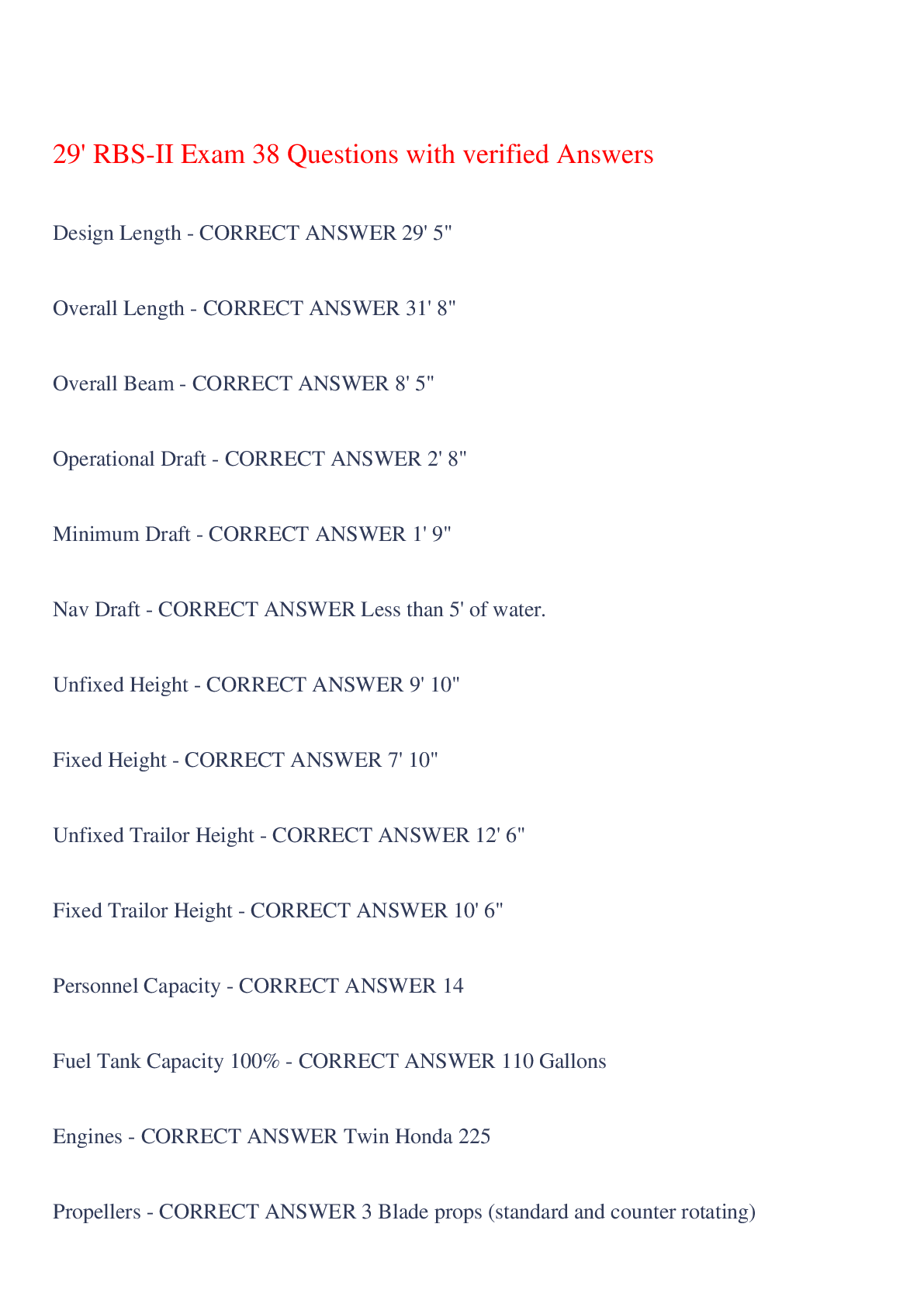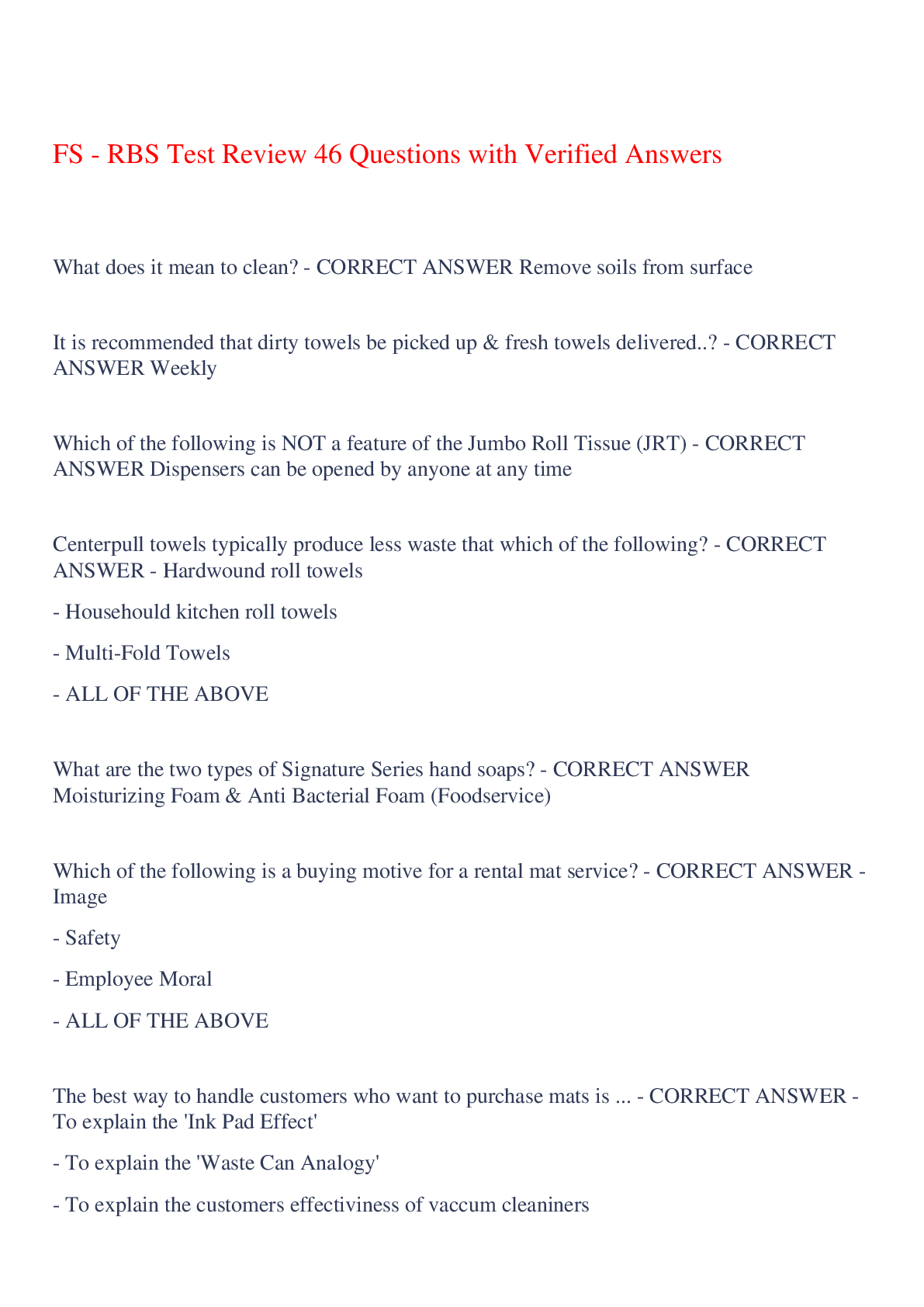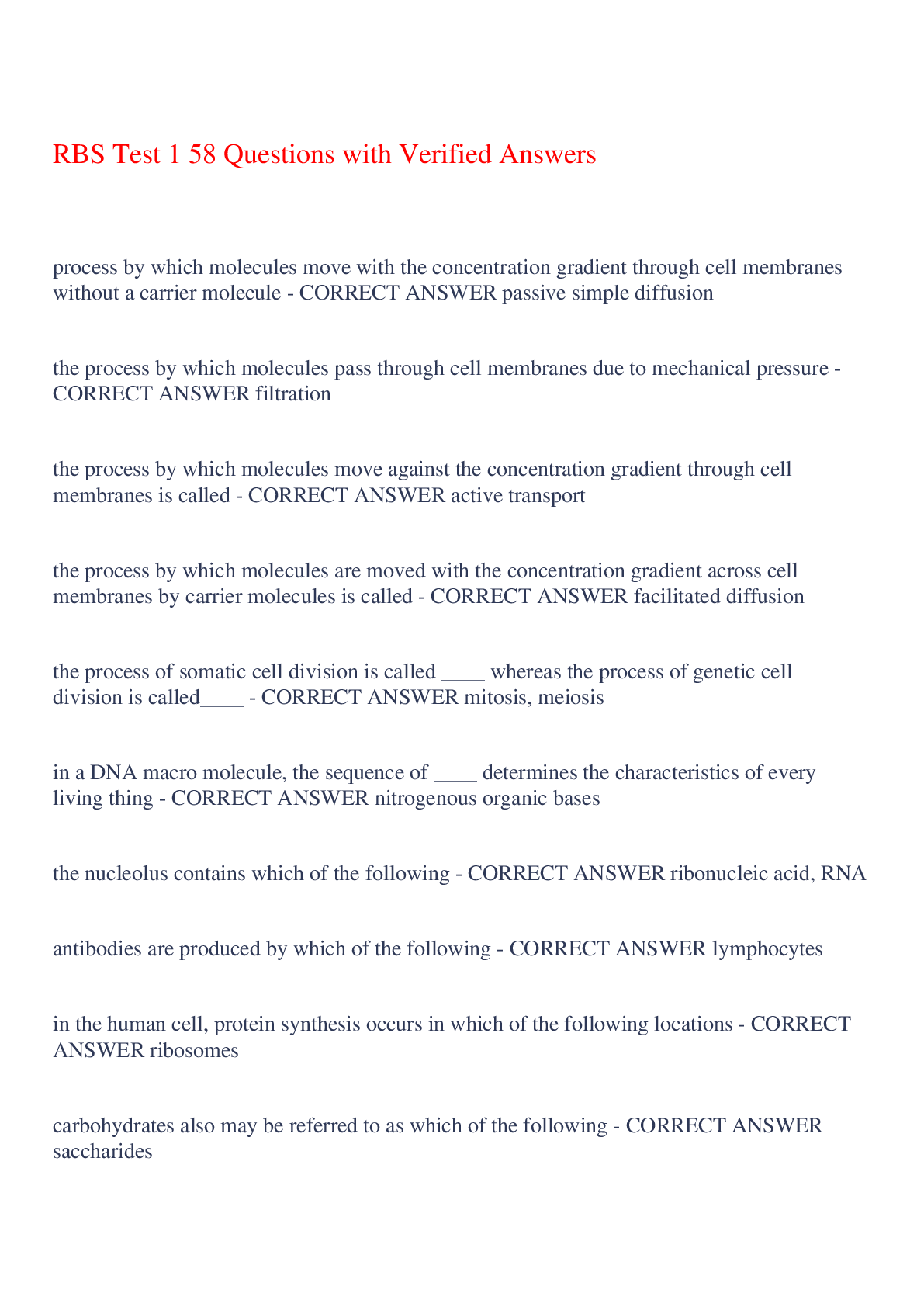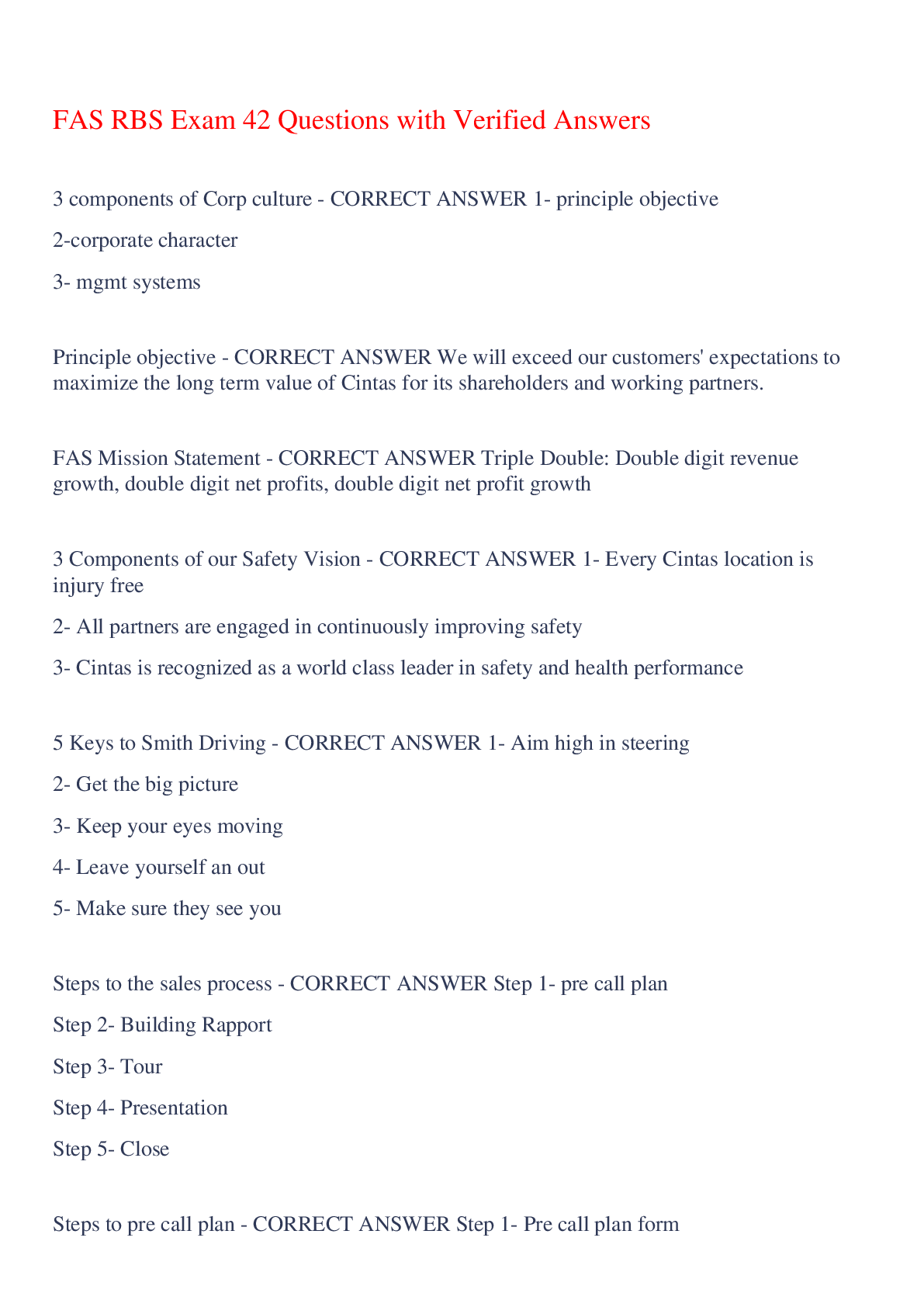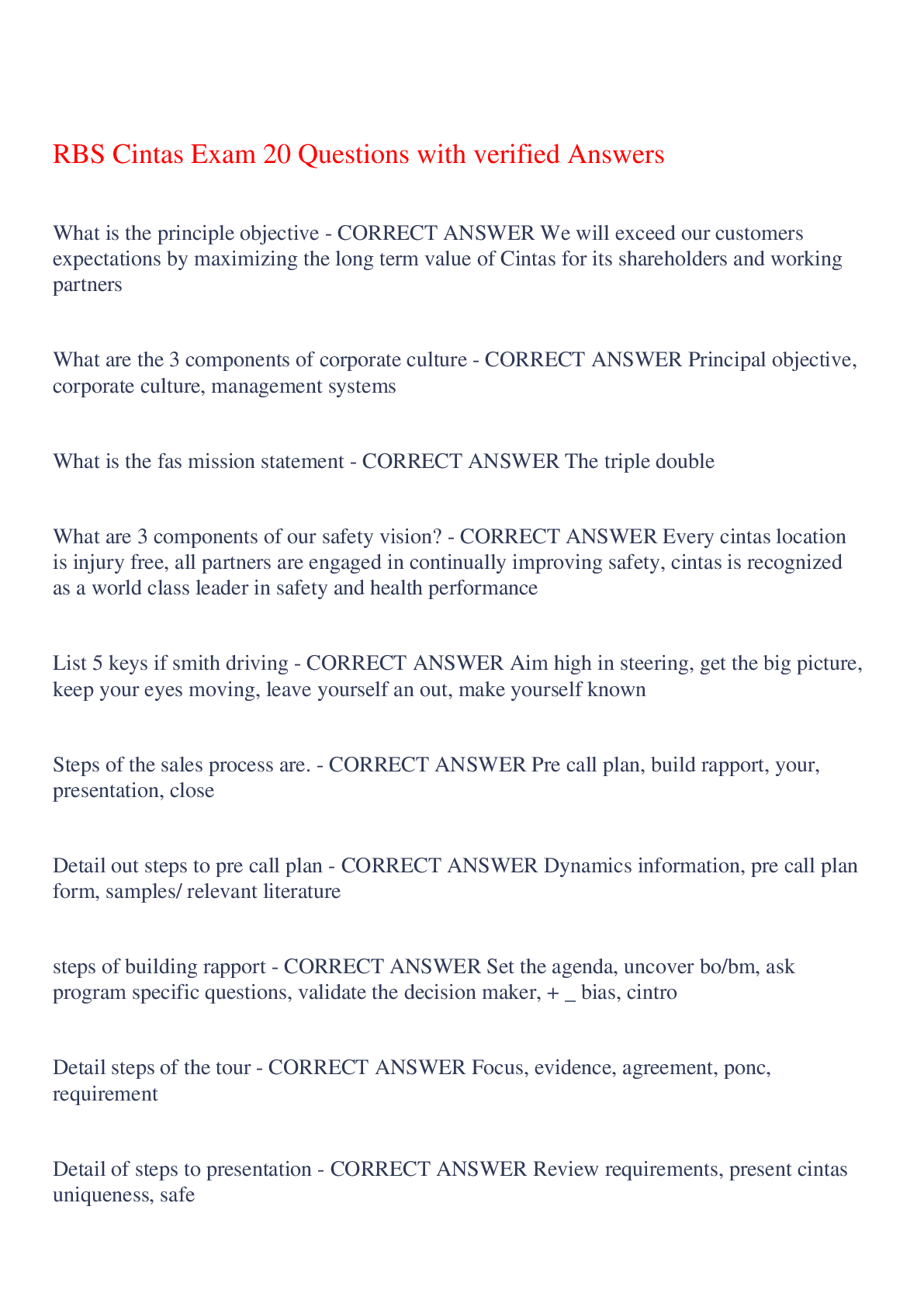FUNDAMENTALS NCLEX REVIEW 73 Questions with Verified Answers,100% CORRECT
Document Content and Description Below
FUNDAMENTALS NCLEX REVIEW 73 Questions with Verified Answers Falls: assessment - CORRECT ANSWER upon admission and place the patient near the nurse's station falls: high risk interventions - COR... RECT ANSWER bed or chair alarms nurse call light low bed raised edge mattress video camera nonskid floor mat clear environment falls: low risk / all interventions - CORRECT ANSWER orient client to setting nonskid footwear call light well lit room no barefoot or stockings low bed alarm grab bars fall alert device hourly rounding by staff bed that allows exit toward strong side bladder and bowel programs falls: if you find a client on the ground - CORRECT ANSWER 1. abcs 2. injury check 3. get help 4. notify 5. incident report falls: pt is actively falling - CORRECT ANSWER step behind the client place feet apart w knees bent place 1 foot behind the other and extend the leg let the client slide down restraints: must be - CORRECT ANSWER least restrictive restraints: you should do what first - CORRECT ANSWER nonpharm interventions first like distraction or observation restraints: notify the hcp - CORRECT ANSWER immediately after application restraints: interventions - CORRECT ANSWER document 15-30minutes potty 15-30minutes assess 2 hrs tie to bed frame with loose quick release knot fire safety: RACE - CORRECT ANSWER rescue alarm confine extinguish fire safety: PASS - CORRECT ANSWER pull aim squeeze sweep fire safety: home - CORRECT ANSWER no smoking signs careful w o2 therapy stop drop and roll fire safety: in hospital - CORRECT ANSWER all equipment needs to be grounded do not over crowd outlets no extension cords ergonomics: do not bend at - CORRECT ANSWER the waist or twist use major muscle groups and tighten abd ergonomics: bed to chair transfer - CORRECT ANSWER lower bed move to strong side stand then pivot ergonomics: repositioning in bed - CORRECT ANSWER raise bed to waist lower side rails use slide boards and draw sheets client fold arms over chest get assistance ergonomics: full wt bearing transfer - CORRECT ANSWER stand by assist, independent ergonomics: partial weight bearing - CORRECT ANSWER 1 person stand w pivot and gait belt if cooperative noncooperative? 2 person with full body sling ergonomics: non weight bearing - CORRECT ANSWER motorized device if cooperative and ue strength 2 person full sling if un cooperative and no strength ergonomics: ask - CORRECT ANSWER cooperative ? weight bearing? clients should lift own weight and help use devices when >35lbs of body weight positioning: semi fowlers - CORRECT ANSWER 30 degrees positioning: fowlers - CORRECT ANSWER 45-60 positioning: high fowlers - CORRECT ANSWER 90 degrees resp distress positioning: supine - CORRECT ANSWER SCI positioning: prone - CORRECT ANSWER post lumbar puncture- fetal position immobilized post myelogram positioning: lateral lying - CORRECT ANSWER abd sx, sz (head to side), post op tonsillectomy post liver biopsy(right) positioning: sim's - CORRECT ANSWER prone left lying with right hip and knee flexed enemas! positioning: lithotomy - CORRECT ANSWER rectal, perineal, or vaginal procedures feet in stirups positioning: tredenlenburg - CORRECT ANSWER during labor head down, legs up positioning: modified tredenlenburg - CORRECT ANSWER head supine, legs elevated positioning: reverse tredenlenburg - CORRECT ANSWER head up feet down traction positioning: dorasal recumbant - CORRECT ANSWER supine with knees flexed urinary cath crutches: how to assess fit - CORRECT ANSWER 3 finger widths or 1-2 in between axilla and top of crutch elbows flexed at 20-30 degrees do not bear weight on axilla crutches: nonweight bearing - CORRECT ANSWER 3 pt gait both crutches forward followed by unaffected leg crutches: 2 pt - CORRECT ANSWER partial weight bearing one crutch and opposite leg together then next crutch and opposite leg together crutches: 4 pt - CORRECT ANSWER resembles walking weight bearing one crutch, opposite , one crutch , opposite crutches: which leg goes first - CORRECT ANSWER affected crutches: upstairs - CORRECT ANSWER push down on rail and crutch, move unaffected leg then affected leg with crutch crutches: down stairs - CORRECT ANSWER affected and crutches on the stair bring unaffected affected down first with crutch crutches: getting up from a chair - CORRECT ANSWER both crutches on one side slide to edge of chair grab arm rest push down use unaffected to support canes: fitting - CORRECT ANSWER wear shoes when sizing length measured by greater trochanter to floor canes: how to walk - CORRECT ANSWER move cane forward 6-10 in then weaker leg or cane and affected at same time canes: up stairs - CORRECT ANSWER up with good strong leg move cane bear weight on strong move weak canes: down stairs - CORRECT ANSWER down with bad cane weak leg strong leg sight guided technique - CORRECT ANSWER walk slightly head with client holding elbow and nurse describing the environment walker: sizing - CORRECT ANSWER have client wear shoues wrists are even with the hand grips on the walker when arms dangle walker: walking - CORRECT ANSWER walker first about 12 inches advance with the affect leg then unaffected walker: a rolling walker is not appropriate for a - CORRECT ANSWER parkinson patient due to gait most important practice in preventing health care associated infections - CORRECT ANSWER hand hygiene avoid places clients in the same room who are on - CORRECT ANSWER isolation precautions with immunocompromised, open wounds or anticipated long length of stay must be 3 feet from each other do not recap needles - CORRECT ANSWER clean spills with bleach and water 1:10 dilution standard ppe - CORRECT ANSWER gloves gown goggles mask PPE: airborne - CORRECT ANSWER N95 mask for known or suspected TB private room with negative airflow keep door closed surgical mask for client if they are leaving gown and gloves only for suspected splash or contact of body fluids or vessicles have not crusted PPE: airborne diseases - CORRECT ANSWER measles/ rubeola herpes zoster/shingles TB chickenpox PPE: droplet diseases - CORRECT ANSWER meningococcal pneumonia respirator syncytical virus rubella flu diptheria mumps strep pertussis scarlet fever PPE: droplet - CORRECT ANSWER protects aganist pathogens larger than 5 mcg private room may cohort with client with same organism door closed mask when 3ft from client MASK pregnant clients should avoid these pts - CORRECT ANSWER TORCH toxoplasmosis Other [vsv/pavovirus b 19] rubella cytomegalovirus herpes simplex PPE: contact disease - CORRECT ANSWER direct or indirect transmission wound drainage fecal incontinence CDIF- standard and contact Hep A- standard and contact if fecal incontinent Herpes simplex- oral, skin, genital MRSA RSV rotavirus salmonellosis shigellosis staph vre PPE: contact - CORRECT ANSWER gowns gloves private room cohort w same organism disposal in nonporous bag dedicated equipment protective isolate - CORRECT ANSWER for chemo patients immunocompromised neutropenic standard precautions sterile supplies minimize exposure to fresh flowers and fruits sterile gown and mask positive pressure room diseases to report to cdc - CORRECT ANSWER hiv/aids chicken pox hep A hep B hep C measles meningoococcal rubella salmonella shigella TB order of ppe application - CORRECT ANSWER goes up the body then hands gown mask goggles gloves order of ppe removeal - CORRECT ANSWER alphabetical order gloves goggles - ear piece and headband only gown- pull down rolling inside out mask- only touching ties primary prevention - CORRECT ANSWER promoting health and preventing disease immunization programs education nutrition and fitness activities secondary prevention - CORRECT ANSWER early id of illness and providing treatment screenings exercise programs for already fat or weak pts tertiary prevention - CORRECT ANSWER preventing long term issues blood pressure screening - CORRECT ANSWER begin at 20 annually if over 120/80 cholesterol screening - CORRECT ANSWER q5years if no factors begin at 20 blood glucose screening - CORRECT ANSWER every 3 years begin at 45 pap test - CORRECT ANSWER q 3 years begining at 21 breast exam - CORRECT ANSWER begin at 20 q 3years 40: yearly testicular exam - CORRECT ANSWER begin at 15 monthly self exams psa and dre - CORRECT ANSWER annually [Show More]
Last updated: 7 months ago
Preview 1 out of 11 pages
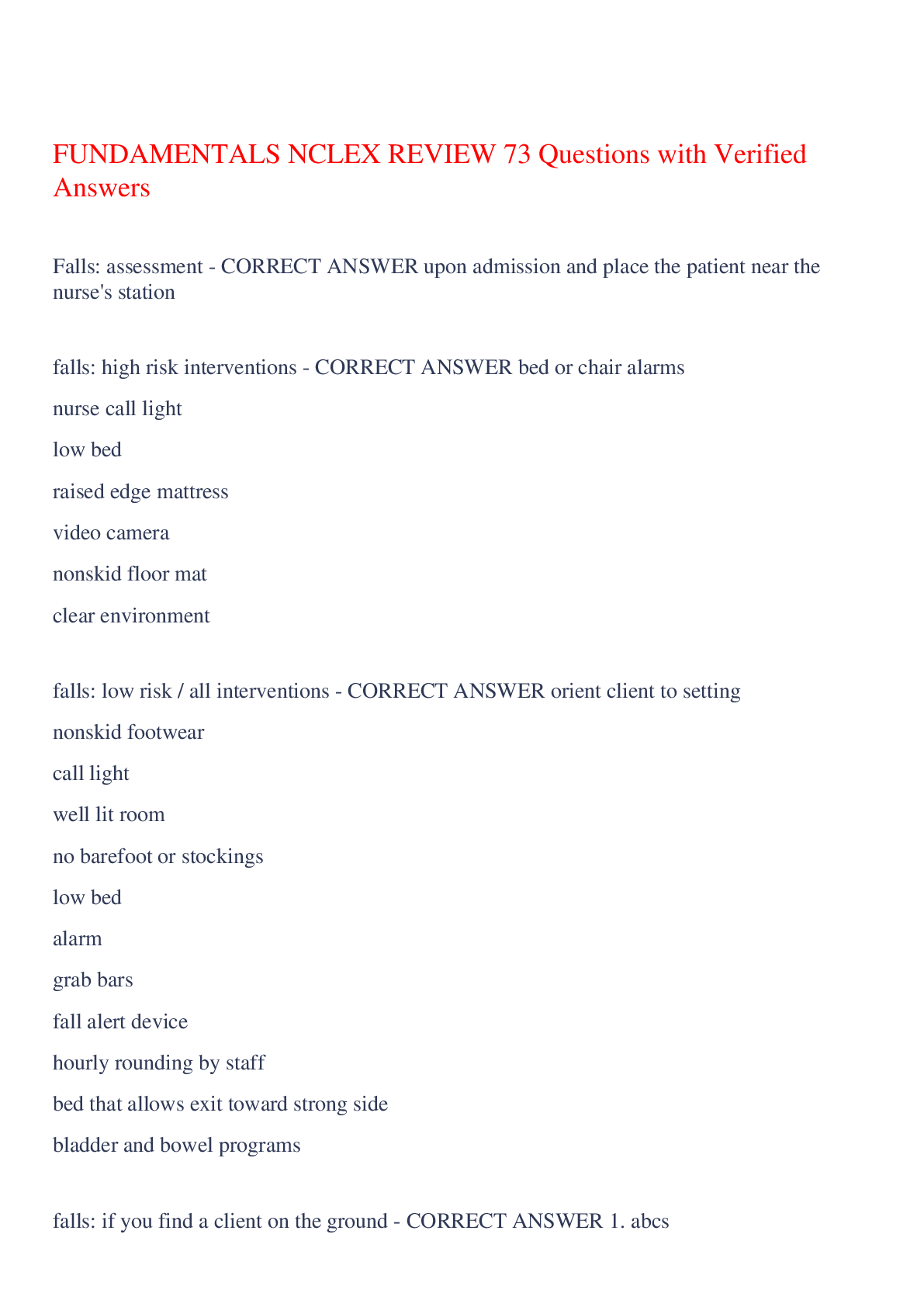
Buy this document to get the full access instantly
Instant Download Access after purchase
Add to cartInstant download
We Accept:

Reviews( 0 )
$9.50
Document information
Connected school, study & course
About the document
Uploaded On
Nov 14, 2023
Number of pages
11
Written in
Additional information
This document has been written for:
Uploaded
Nov 14, 2023
Downloads
0
Views
105















